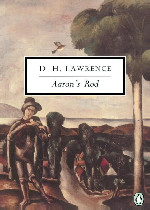
Aaron's rod refers to any of the staff carried by Moses's brother, Aaron, in the Torah. The Bible tells how, along with Moses's rod, Aaron's rod was endowed with miraculous power during the Plagues of Egypt that preceded the Exodus. There are two occasions where the Bible tells of the rod's power.
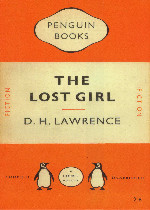
The Lost Girl is a novel by D. H. Lawrence, first published in 1920. It was awarded the 1920 James Tait Black Memorial Prize in the fiction category. Lawrence started it shortly after writing Women in Love, and worked on it only sporadically until he completed it in 1920. Alvina Houghton, the daughter of a widowed Midlands draper, comes of age just as her father’s business is failing. In a desperate attempt to regain his fortune and secure his daughter’s proper upbringing, James Houghton buys a theater.
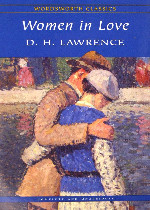
Women in Love is a novel by British author D. H. Lawrence, published in 1920. It is a sequel to his earlier novel The Rainbow (1915), and follows the continuing loves and lives of the Brangwen sisters, Gudrun and Ursula. Gudrun Brangwen, an artist, pursues a destructive relationship with Gerald Crich, an industrialist. Lawrence contrasts this pair with the love that develops between Ursula Brangwen and Rupert Birkin, an alienated intellectual who articulates many opinions associated with the author.
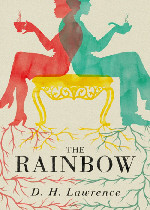
The Rainbow is a 1915 novel by British author D. H. Lawrence. It follows three generations of the Brangwen family living in Nottinghamshire, particularly focusing on the individual's struggle to growth and fulfilment within the confining strictures of English social life. Lawrence's 1920 novel Women in Love is a sequel to The Rainbow.
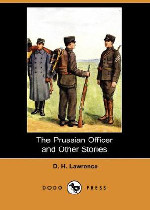
The Prussian Officer and Other Stories(普鲁士军官) 立即阅读
The Prussian Officer and Other Stories is a collection of early short stories by D. H. Lawrence. It was published by Duckworth in London on 26 November 1914, and in America by B. W. Huebsch in 1916. The stories collected in this volume are: "The Prussian Officer", "The Thorn in the Flesh", "Daughters of the Vicar", "A Fragment of Stained Glass", "The Shades of Spring", "Second Best", "The Shadow in the Rose Garden", "Goose Fair", "The White Stocking", "A Sick Collier", "The Christening", "Odour of Chrysanthemums".
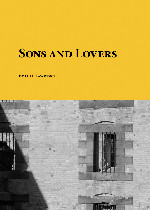
Sons and Lovers is a 1913 novel by the English writer D. H. Lawrence, originally published by B.W. Huebsch Publishers. The Modern Library placed it ninth on their list of the 100 best novels of the 20th century. While the novel initially received a lukewarm critical reception, along with allegations of obscenity, it is today regarded as a masterpiece by many critics and is often regarded as Lawrence's finest achievement.
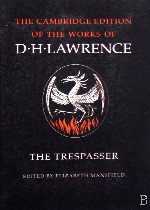
The Trespasser is the second novel written by D. H. Lawrence, published in 1912. Originally it was entitled the Saga of Siegmund and drew upon the experiences of a friend of Lawrence, Helen Corke, and her adulterous relationship with a married man that ended with his suicide. Lawrence worked from Corke's diary, with her permission, but also urged her to publish; which she did in 1933 as Neutral Ground. Corke later wrote several biographical works on Lawrence.
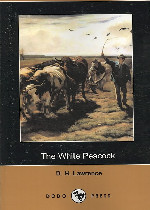
THE WHITE PEACOCK, published in 1911, Lawrence started the novel in 1906 and then rewrote it three times. The curly versions had the working title of Laconia.It involves such Lawrcnrian themes as the damage associated with mismatched marriages, and the border country between town and country. A misanthropic gamekeeper makes an appearance, in some ways the prototype of Mellor's in Lawrence's last novel, Lady Chatterley's Lover. The book includes some notably description of nature and the impact of inclustrialisation on the countryside and the town.
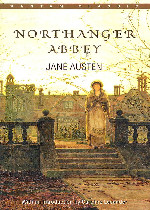
Northanger Abbey (/ˈnɔːrθˌæŋər/) was the first of Jane Austen's novels to be completed for publication, in 1803. However, it was not until after her death in 1817 that it was published, along with her other novel, Persuasion. The novel is a satire of Gothic novels, which were quite popular at the time in 1798–99. This "coming of age," story revolves around the main character, Catherine, a young and naïve "heroine," who entertains her reader on her journey of self-knowledge, as she gains a better understanding of the world and those around her.
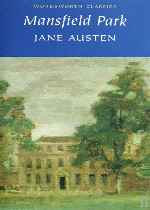
Mansfield Park is the third published novel by Jane Austen, first published in 1814. The novel tells the story of Fanny Price starting when her overburdened family sends her at age 10 to live in the household of her wealthy aunt and uncle, through to her marriage. The novel was first published by Thomas Egerton. A second edition was published in 1816 by John Murray, still within Austen's lifetime. The novel did not receive any critical attention when it was initially published; the first particular notice was in 1821, in a positive review of each of the published novels by Jane Austen.